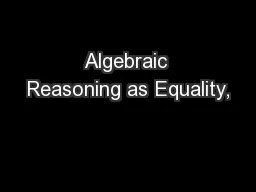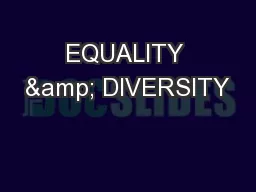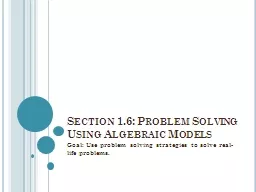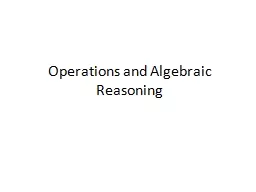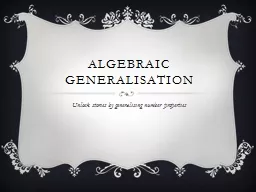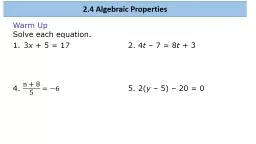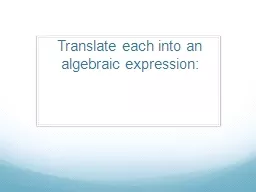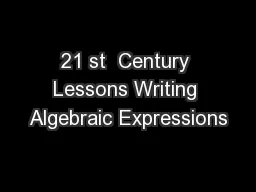PPT-Algebraic Reasoning as Equality,
Author : luanne-stotts | Published Date : 2018-03-08
Representations and Proof Learning Focus Participants will deepen mathematical content knowledge of algebraic reasoning develop awareness of key concepts associated
Presentation Embed Code
Download Presentation
Download Presentation The PPT/PDF document "Algebraic Reasoning as Equality," is the property of its rightful owner. Permission is granted to download and print the materials on this website for personal, non-commercial use only, and to display it on your personal computer provided you do not modify the materials and that you retain all copyright notices contained in the materials. By downloading content from our website, you accept the terms of this agreement.
Algebraic Reasoning as Equality,: Transcript
Download Rules Of Document
"Algebraic Reasoning as Equality,"The content belongs to its owner. You may download and print it for personal use, without modification, and keep all copyright notices. By downloading, you agree to these terms.
Related Documents

